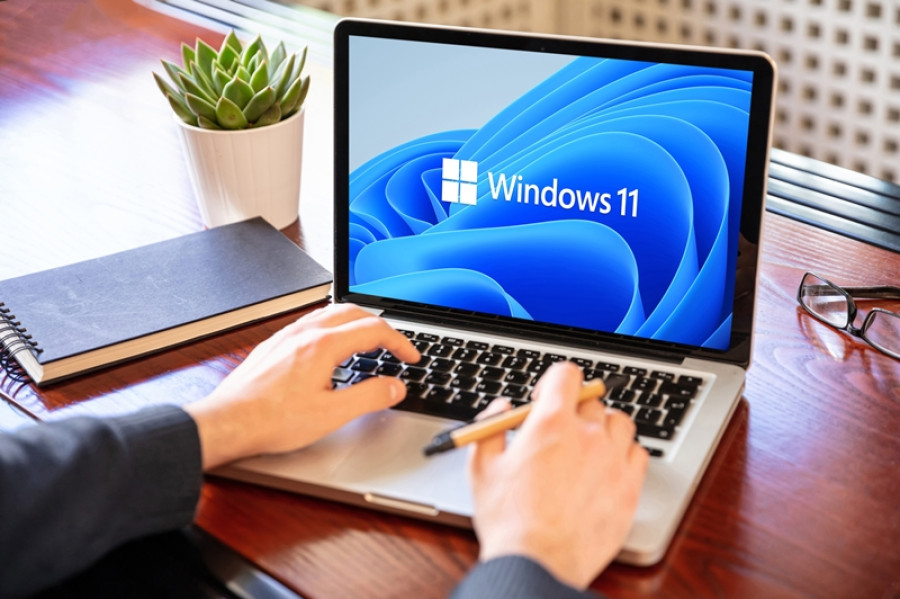Science & Technology
Windows 11: Should you update?
The latest iteration of Windows brings too little of an update to the table for a major generation upgrade.
Prajesh SJB Rana
In 2015, Microsoft claimed that Windows 10 would be the final version of Windows, and all subsequent updates would follow under the Windows 10 umbrella. Surprisingly, Microsoft released a new version of Windows, Windows 11, on October 5, 2021, on a rolling basis. These updates were free for all Windows 10 users, with a few caveats. Windows 11 brings a fresh new coat of paint to the Windows user interface while also introducing a fresh new desktop environment. There is a lot to talk about the latest Windows release as we look into Microsoft’s latest iteration to the Windows line.
While Windows 11 is free for many Windows 10 users, there is a rite of passage for this version of Windows. Not all desktops and laptops may be able to use Windows 11, since the update comes with system requirements that might lock many Nepali systems out of the update. While the base requirements, a 64-bit processor with at least 4 GB of RAM and 64 GB of storage space, are decent requirements for a generational upgrade, the requirement of a TPM (Trusted Platform Module) 2.0 module will confuse a lot of people who have custom computers. More recent laptops would most likely have this TPM module, but many older and custom-made computers might not. Computers running older CPUs, mainly Intel 7th Generation and older, are locked out of the update, while Windows 11, at least in the early phases, did not play well with AMD CPUs due to a scheduler issue. Many workarounds for these requirements aren’t official and may lock you out of future updates. Microsoft has also removed local user profiles for Windows 11 Home users, forcing people to connect to an online Microsoft account, which is for data collection and telemetry in all intents and purposes. Windows 11 might be free, but you will be paying for it in data.
Windows 11 isn’t drastically different from Windows 10. Apart from a fresh coat of paint and a few features, the operating system maintains most of the core functionality of Windows 10. Visually, Windows now has rounded corners, and the taskbar icons and the start menu have moved to the centre. One of the most jarring experiences for me has been getting used to the centred Start Menu. While the new start menu looks nice with pinned apps on the top and recent files below it, the sporadic movement of the Start button is a chore. In Windows 10 and previous versions of Windows, the left aligned start menu has been in the same spot as always. In Windows 11, the menu is centred, and the addition of new icons tends to push icons away from each other on the centred plane. I was forced to look at the taskbar and understand where the icon moved to click on it. It would have been a better design decision to leave the start button to the left while only moving application icons to the centre. Fortunately, users can fix this problem by realigning all icons to the left.
The start menu has a new look. Instead of a longer flyout, the new menu has a broader feel with a search bar at the top, followed by pinned apps and recent files. The new start menu looks fresh and nice; pinned applications and recent files follow a nice long search bar on the top. Although the simplified start menu is a visual upgrade to Windows 10, it is far more simplistic with no live tiles or dynamic content. Even the context menu for the taskbar has been simplified as right-clicking the bar only yields one result with the removal of essential options like the task manager or toolbars. Oh, and you can't move the taskbar at all in Windows 11—at the bottom is the only option.
The Settings menu also gets a major overhaul, now displaying a unified screen with all options on the left with menu specific content on the right. The file manager receives a similar visual overhaul while core functionality remains the same. The new icons lack visual balance with different colours allocated for each user folder like downloads and documents.
Multitasking and multiscreen support have been one of the most exciting features of the new windows. Snap layouts have gotten a major overhaul with easy grid layouts in addition to some unconventional ones. If you move to a fullscreen app, these stacked groups also appear as one unified window in the taskbar. Even windows arranged on an external screen scale back naturally and precisely when plugging out the display. Choose to plug it back in and everything returns to how you left them. Using multiscreen setups with Windows has always been a hassle, but the new additions to Windows 11 make them much easier to work with.
For gamers, Windows 11 brings Auto HDR support, a feature pulled with the development of the Xbox Series X consoles. Auto HDR allows games that run on DirectX 11 and higher to get automatically scaled to the high-dynamic range of the display so that even games that don’t have in-built HDR support get HDR colour upgrades on Windows 11. DirectStorage is another feature aimed at gamers where games can load graphical files and computations directly to the graphics card rather than being piped through the CPU; removing this redundant path will make for a smoother gaming experience while also cutting down on the loading times. Games need to support DirectStorage however, today, there are no games with support for the feature. In inherent performance, games were almost similar to Windows 10 in raw frames in games like ‘Assassin’s Creed Valhalla’, ‘F1 2021’, and ‘Forza Horizon 4’.
Windows 11 will also support native Android apps, although not from the Google Play Store but rather from the Amazon Store (which might not have all Android apps). This feature is still missing in Windows 11 but should be implemented further along the update cycle. Windows 11 is not without its bugs: the operating system freezes from time to time, apps crash (settings and explorer) from time to time, and at one-point essential features like the emoji keyboards weren’t working.
Windows 11 isn’t perfect; it has its kinks and bugs but should you consider updating regardless of the problems? I would say no. Windows 11 brings too little of an update to the table for a major generation upgrade. Most of the system's core functionality remains the same, with only a fresh coat of paint and a few gimmicks like the widget panel. While the system does offer a better and more unified design language, Windows 11 could have easily passed as a Windows 10 update. The arbitrary system requirement limitations, in addition to very similar performance metrics to its predecessor, make it a very difficult recommendation. The OS also suffers from a lot more bugs that the company had already fixed for Windows 10. All the new features in Windows 11 feels like service updates to Windows 10. Windows 11 is a difficult recommendation in its current state, and with Windows 10’s continued support till 2025, there is very little incentive to update.




 6.53°C Kathmandu
6.53°C Kathmandu










